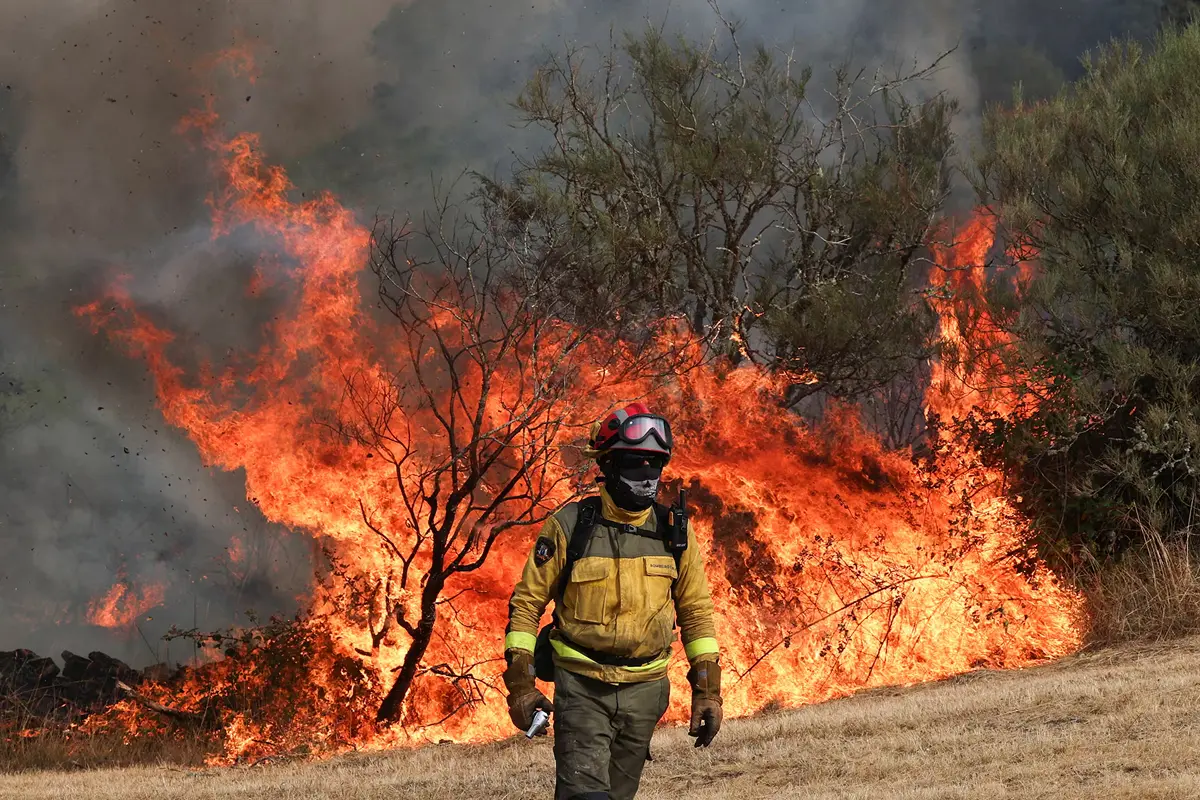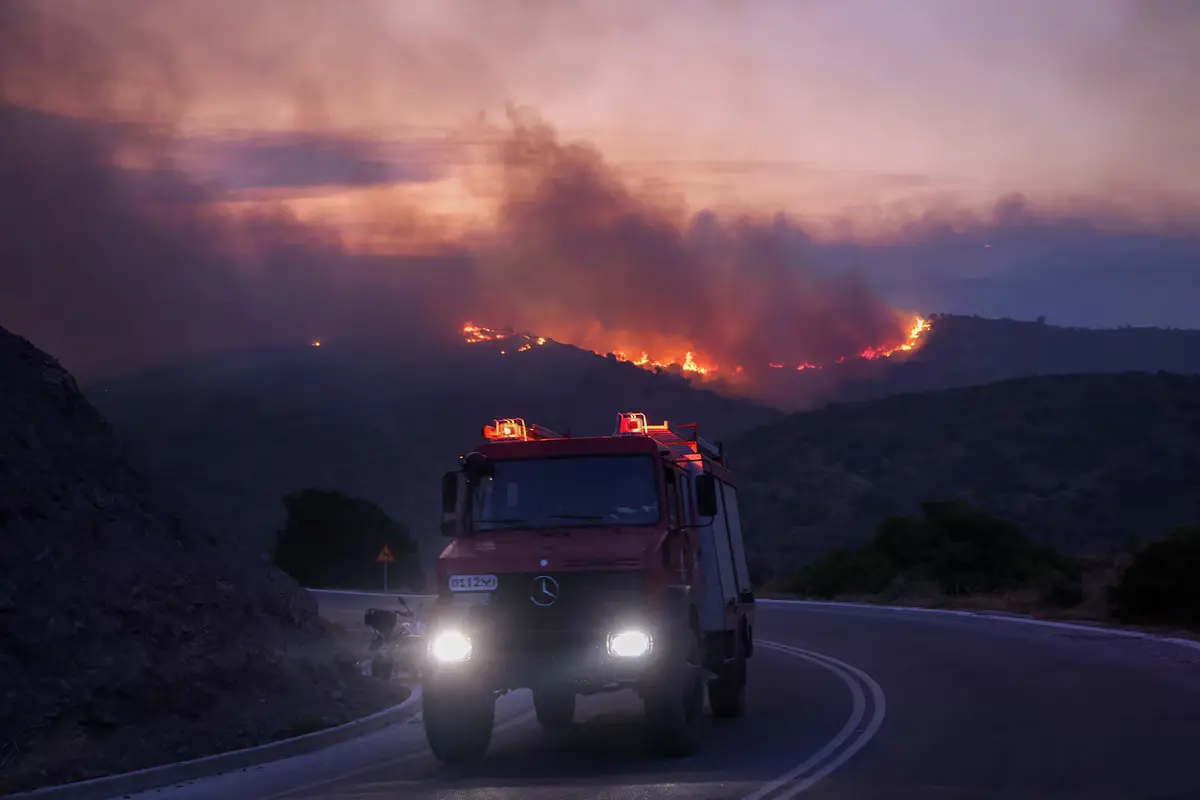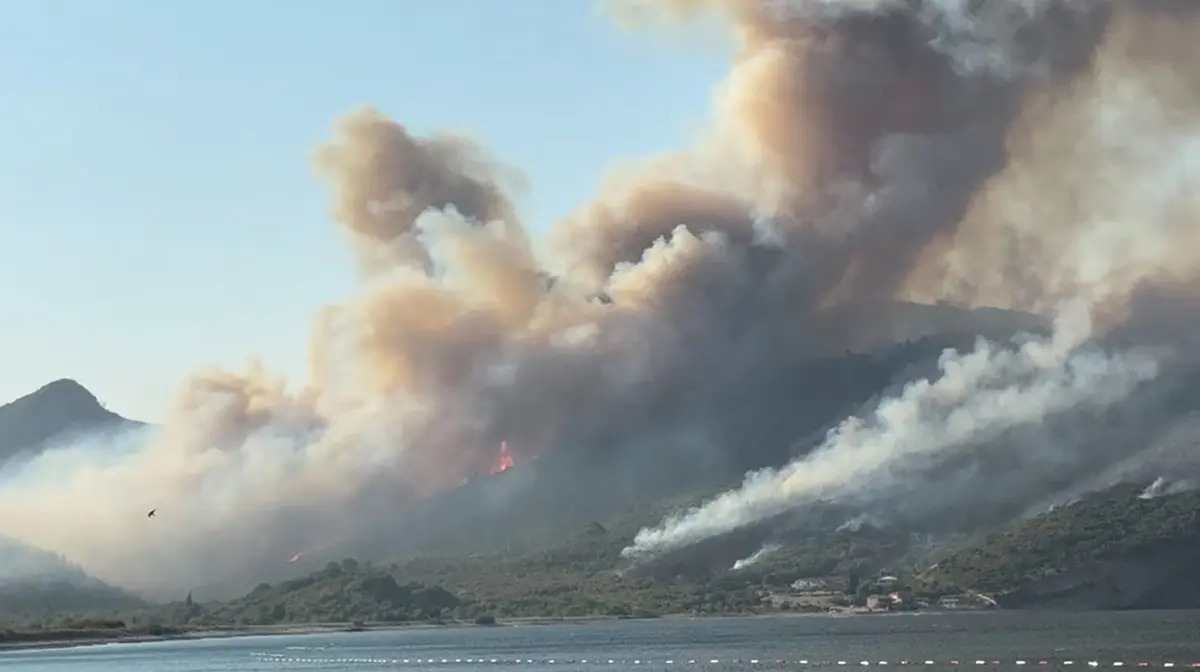Every single day, the news seems to bring another story about a wildfire or a heatwave, often from a different part of the world. It has become part of our daily reality, and the numbers are staggering. The National Interagency Fire Center reports that more than 43,213 wildfires have already been recorded around the globe this year. These fires are not only destroying forests and wildlife habitats. They are also affecting millions of people, disrupting communities, damaging health, and leaving scars on the climate that will last for years. This summer, Europe heatwave and wildfires in 2025 are hitting hard.
Spain and Portugal are struggling through weeks of extreme temperatures that have set the stage for fast-spreading flames. More than four people have tragically lost their lives, and residents in several areas are watching homes, farmland, and livelihoods turn to ash in the scorching heat.
What is unfolding is not just bad weather. It is a sign of how our changing climate is making extreme events more frequent, more intense, and more dangerous. The heat, fires, and smoke are interconnected, and understanding this connection is the first step toward protecting lives and reducing damage in summers to come.
What is happening during the Europe heatwave and wildfires 2025?
- 409,000 plus hectares burned in the EU from January to 12 August 2025, more than double the area burned by this point last year. Fire counts and fire-related CO2 emissions are also higher year to date.
- Spain is battling dozens of active or recently contained fires during the current heatwave. A blaze near Madrid prompted evacuations and damaged more than 1,000 hectares. National alerts cover most regions.
- Portugal has deployed thousands of firefighters against several large incidents, with authorities extending high alert status as temperatures push past 40°C.
- Heat records and health impacts are mounting across Europe as the Europe heatwave expands. July 2025 was the third-warmest July on record globally. Europe continues to warm roughly twice as fast as the planet’s average.
- Air quality is deteriorating near fire zones and downwind regions as smoke raises PM2.5 and ozone. European services are tracking smoke plumes and pollution transport in near real time.
Spain: multiple wildfires colliding with an intense August heatwave
Spain entered its second major heatwave of the summer on 3 August, with widespread red and orange alerts and peaks above 44°C in the southwest. Meteorologists warned the episode could persist into the week of 18 August. High temperatures, very dry fuels and gusty local winds have supported rapid fire spread.

Around Madrid, a wildfire near Tres Cantos forced evacuations and injured one person severely before firefighters contained the blaze after it burned more than 1,000 hectares. Elsewhere, regions including Galicia, Castile and León and Andalusia have seen additional fires and evacuations as the heat persists.
Why it matters for air quality: During heatwaves, ozone can spike over urban areas, and wildfire smoke adds PM2.5. Spain’s meteorological agency has flagged increased ozone episodes alongside the fires during this heat spell. That combination elevates daily health risks, especially for older adults, children and people with heart and lung disease.
Portugal on high alert amid extreme Europe heatwaves and wildfire 2025 conditions
Portugal extended nationwide alert status through mid-August as temperatures of 36 to 44°C combined with very high to maximum fire danger. Thousands of firefighters have been mobilised to contain several large incidents, including major operations reported on 11 to 12 August.
By mid-July, official statistics already showed burned area running about three times higher than the same period last year. Subsequent large fires pushed totals higher into late July and early August. Authorities cite more aggressive fire behaviour since 2017 as a continuing challenge for suppression and community protection.
Air quality and smoke: European monitoring has tracked smoke from Iberian fires affecting regions downwind. In previous severe outbreaks, Portugal wildfires generated significant emissions with smoke transport into Spain and France. The same mechanisms apply in 2025, which means communities far from flames can still experience degraded AQI.
Beyond Iberia: a continental-scale Europe heatwave

The current European heatwave has produced top-level heat alerts in Italy, France, the Balkans and parts of central and eastern Europe, with new temperature records reported this week and continued wildfire activity near tourist corridors. This broad spatial footprint raises the risk of simultaneous crises and strains mutual aid across borders.
The World Meteorological Organisation notes that Europe’s land area is warming about twice the global average. A warmer baseline means the same high-pressure patterns now produce higher extremes, longer hot spells and drier fuels. July 2025 ranked as the third-warmest July globally, reinforcing the trend of back-to-back extreme summers.
What do the numbers say about Europe Heatwaves and wildfires 2025?
- Burned area to 12 August 2025 in the EU: 409,220 hectares
- Number of fires: 1,599
- Estimated fire-related CO2 emissions: 13.47 million tonnes
All three indicators are higher than at the same time in 2024. These metrics come from the EU’s Joint Research Centre using the European Forest Fire Information System. - Spain and Portugal situation snapshots: dozens of active fires in Spain during the heatwave, and thousands of firefighters engaged in Portugal across several districts.
- Continental context: Europe-wide burned area in mid July had already exceeded the area of Luxembourg, with Romania an outlier for per cent of national area burned.
Real-time air quality trend (13 August 2025):

- Much of Spain, France, and central Europe is currently showing moderate AQI levels (in the 50–60 range), whereas these areas usually register in the good category under normal summer conditions.
- The moderate levels across France and other nearby regions suggest cross-border smoke transport and heat-related ozone increases.
Air quality impact: While moderate AQI may not harm the general population immediately, it reflects a noticeable deterioration from typical clean-air conditions. Sensitive groups such as children, the elderly, and those with respiratory issues may feel the effects, especially during prolonged exposure.
What is causing the Europe heatwave and wildfires in 2025?
Scientists identify three overlapping contributors that amplify the Europe heatwave and wildfires 2025 risk:
- A warmer background climate
Europe’s land temperatures have risen more than 2.1 to 2.2°C above the pre-industrial baseline, roughly double the global rate, which loads the dice toward more frequent and intense heat extremes. - Persistent high pressure and drought
Recent heat domes transport hot, dry air from North Africa and suppress cloud formation. That reduces soil moisture and raises the Fire Weather Index, a predictor of fast fire spread. Forecast anomaly maps show above-normal fire weather across much of southern Europe through mid-August. - Compounding air quality hazards
Wildfire smoke elevates PM2.5 while heat accelerates ozone chemistry. The Copernicus Atmosphere Monitoring Service is tracking smoke and surface pollution as fires evolve, which helps anticipate downwind AQI impacts.
Health and AQI: practical guidance for residents and travellers
- Check local alerts daily. Use official national weather and civil protection alerts from AEMET in Spain and IPMA or national civil protection in Portugal for heat and fire risk.
- Monitor AQI along with temperature. Smoke can raise PM2.5 far from the fire line, and ozone peaks in late afternoon during heatwaves. Follow trusted AQI dashboards and regional forecasts informed by CAMS.
- Reduce exposure. Stay indoors during smoke episodes, run certified air purifiers if available, and limit strenuous activity outdoors when AQI is poor. Public health agencies consistently recommend these measures during wildfire smoke events.
Economic and ecosystem impacts to watch
- Tourism disruption: evacuations in coastal and mountain destinations have affected visitor mobility, with authorities temporarily closing roads and beaches during active operations.
- Forests and carbon: higher burned area increases fire season CO2 emissions and damages biodiversity-rich Mediterranean habitats, making recovery more difficult in back-to-back hot years.
- Energy and urban heat: persistent hot nights stress power grids and increase cooling demand while raising heat stress in dense city neighbourhoods.